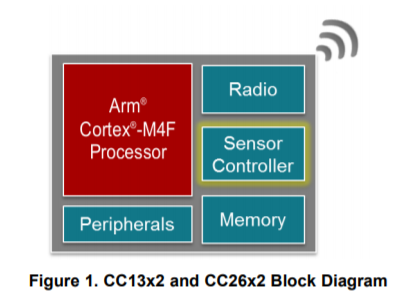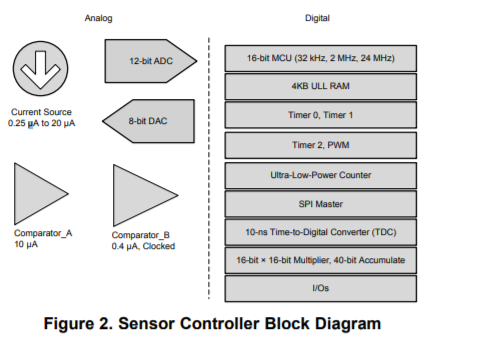-
Real-time Sensing Doesn’t Have to Consume a Lot of Energy
Real-time Sensing Doesn’t Have to Consume a Lot of Energy
Javier Ramos
People mostly associate smart meters with electric meters (e-meters), but after seeing the benefits that smart meters brought to the e-meters market – delivering real-time consumption data to consumers so they could manage their usage and fighting against theft through tamper detection – consumers want the same benefits in water and gas flow meters.
One key difference between e-meters and flow meters is the power source. E-meters almost always have a power source; therefore, power consumption is not a key concern. Flow meters rarely have a source for power and will need to be battery operated. A TI ultra-low-power sensor controller can help you differentiate today in the flow meter market by designing the lowest-powered battery-operated smart meter application.
In most flow meter applications, the main Arm®-M4F application microcontroller (MCU) may only need to transmit measurements a few times a day. The main MCU can remain on standby in-between transmissions, which can reduce the average current consumption of the system significantly. It’s imperative to monitor the flow of water or gas at all times, which is where you can employ a separate 16-bit MCU ultra-low-power coprocessor optimized for handling low-power measurements while the main MCU is on standby. The SimpleLink™ CC1312 and CC1352R/P device platform (see Figure 1) and its ultra-low-power sensor controller give you the ability to achieve low power and manage the application, metrology and radio-frequency (RF) communication, all in one chip.

The SimpleLink sensor controller is a dedicated 16-bit central processing unit (CPU) core designed to be very low power with respect to active mode, standby mode and startup energy. As you can see in Figure 2, the sensor controller consists of analog and digital peripherals that have been optimized to achieve ultra-low power.

Harnessing these peripherals and 2MHz clock mode make this controller a good fit for inductive sensing applications to achieve ultra-low power: for example, using the inductive measurement principle, it’s possible to achieve an average current consumption as low as 3.9µA at 100Hz. To learn more and see examples of flow meter applications, check out" Single-Chip Flow Metering Solution with the CC13x2R Wireless MCU."
Additional resources:
These documents can help you get started with SimpleLink sensor controllers:
- "Ultra-Low Power Designs with the CC13x2 and CC26x2 Sensor Controller."
- "Getting Started with the CC13xx and CC26xx Sensor Controller."
Buy a LaunchPad™ development kit
IMPORTANT NOTICE AND DISCLAIMER
TI PROVIDES TECHNICAL AND RELIABILITY DATA (INCLUDING DATASHEETS), DESIGN RESOURCES (INCLUDING REFERENCE DESIGNS), APPLICATION OR OTHER DESIGN ADVICE, WEB TOOLS, SAFETY INFORMATION, AND OTHER RESOURCES “AS IS” AND WITH ALL FAULTS, AND DISCLAIMS ALL WARRANTIES, EXPRESS AND IMPLIED, INCLUDING WITHOUT LIMITATION ANY IMPLIED WARRANTIES OF MERCHANTABILITY, FITNESS FOR A PARTICULAR PURPOSE OR NON-INFRINGEMENT OF THIRD PARTY INTELLECTUAL PROPERTY RIGHTS.
These resources are intended for skilled developers designing with TI products. You are solely responsible for (1) selecting the appropriate TI products for your application, (2) designing, validating and testing your application, and (3) ensuring your application meets applicable standards, and any other safety, security, or other requirements. These resources are subject to change without notice. TI grants you permission to use these resources only for development of an application that uses the TI products described in the resource. Other reproduction and display of these resources is prohibited. No license is granted to any other TI intellectual property right or to any third party intellectual property right. TI disclaims responsibility for, and you will fully indemnify TI and its representatives against, any claims, damages, costs, losses, and liabilities arising out of your use of these resources.
TI’s products are provided subject to TI’s Terms of Sale (www.ti.com/legal/termsofsale.html) or other applicable terms available either on ti.com or provided in conjunction with such TI products. TI’s provision of these resources does not expand or otherwise alter TI’s applicable warranties or warranty disclaimers for TI products.
Mailing Address: Texas Instruments, Post Office Box 655303, Dallas, Texas 75265
Copyright © 2023, Texas Instruments Incorporated